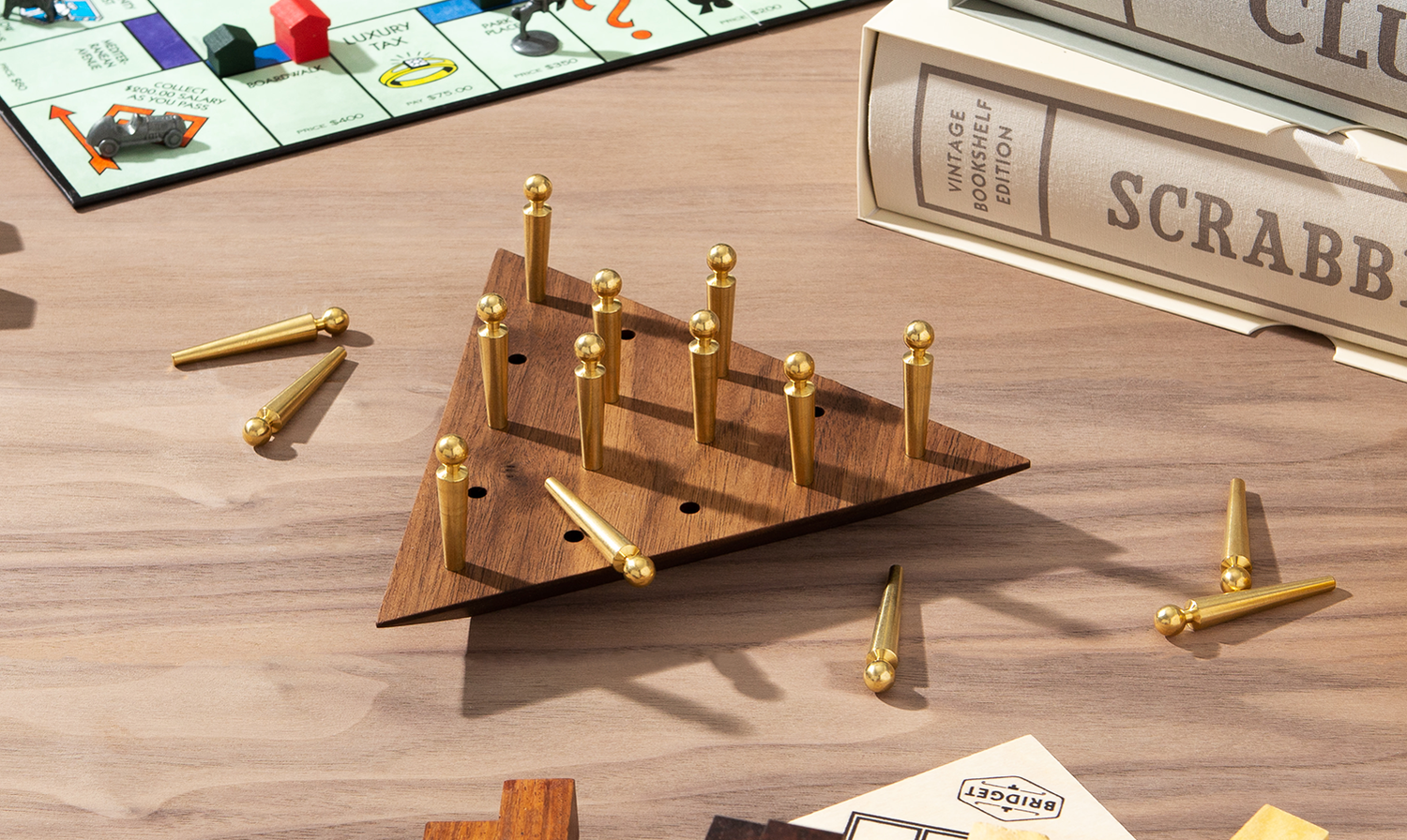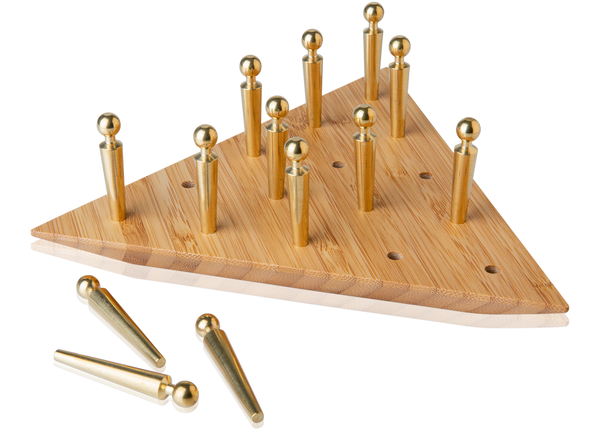Tons of innovative puzzles provide players with a way to assess their intelligence or flex at a party. But the legendary I.Q. Tester, aka Solitaire (in the UK) or Hopscotch, remains an immersive classic among modern puzzle connoisseurs and a happy headache for first timers.
A Brief History of the Game
The classic version of peg solitaire has its origins traced back to the reign of Louis XIV in 1687. A widely circulated origin story is that a prisoner incarcerated in the legendary Bastille cells invented the game as a productive means of passing the time.

These early boards came in a circular design. Gradually, the popularity of the puzzle spread across the continents, resulting in varieties such as the triangular boards found in traditional Cracker Barrel dining spots situated throughout the US.

A typical I.Q. Tester solitaire set consists of a triangular base slotted with 15 pegs. While these testers feature a simple layout, players should not underestimate them. An I.Q. Tester solitaire puts a player’s spatial memory (how the brain charts and memorizes a path, pattern or location) to the ultimate test.
The Rules of the I.Q. Tester
Players begin by removing one peg from the formation. Each subsequent move requires a gap between pegs (like playing peg hopscotch across the board). Some players may liken the puzzle to a solo game of checkers or classic solitaire.
There is no standard win condition, but the game ends when players run out of moves. The fewer the number of remaining pegs, the higher the score. Technically, the highest possible score (and bragging rights) is a single peg.
There are hundreds of permutations to secure the best possible score of one remaining peg, so using a blend of logic and trial-and-error to discover various solutions is highly fulfilling. These tips will give players an edge as they navigate the tricky pegboard:
- Maintain a tight formation. Large gaps (i.e., two spaces or more) between pegs will quickly lead to a dead end.
- Apply geometrical logic. The patterns become more evident with practice.
- Avoid leaving straight rows of pegs during the late game (when players are down to six or seven pegs). These will exhaust available moves sooner rather than later.
- Avoid bunching pegs into complex clusters that may disrupt movement strategy.
Many novice players may find themselves stuck with two or three pegs in their earliest attempts. Some go-getters may beat themselves up over it, but it’s normal with this cryptic device. After all, the experience of discovering a solution and conquering the puzzle is priceless.
Here is a proven solutions for players who wish to experience the satisfaction of cracking the puzzle without the sleuth work.
The peg placements correlate with the alphabets below for easy reference.
Solution
Step 1 — Remove A. F crosses C into A
Step 2 — D crosses E into F
Step 3 — N crosses I into E
Step 4 — L crosses M into N
Step 5 — O crosses N into M
Step 6 — K crosses G into D
Step 7 — B crosses D into G
Step 8 — M crosses H into D
Step 9 — J crosses F into C
Step 10 — A crosses C into F
Step 11 — G crosses D into B
Step 12 — F crosses E into D
Step 13 — D crosses B into A
Getting Started
While I.Q. Tester solitaire boards usually come in flimsy plastic designs, these fail to do justice to a classic puzzle and its illustrious history. (Plus, the tips of plastic pegs may bend out of shape with prolonged use, making a set unusable until players find a suitable replacement part.) Art of Play’s premium design approach to the I.Q. Tester is meant to last for years of enjoyment.
Hopscotch features refined brass or silver pegs set into a sturdy, bamboo base, making it a classy embellishment to any interior setting in addition to Art of Play’s emporium of other curated curios.
Written by Laurenzo Overee








